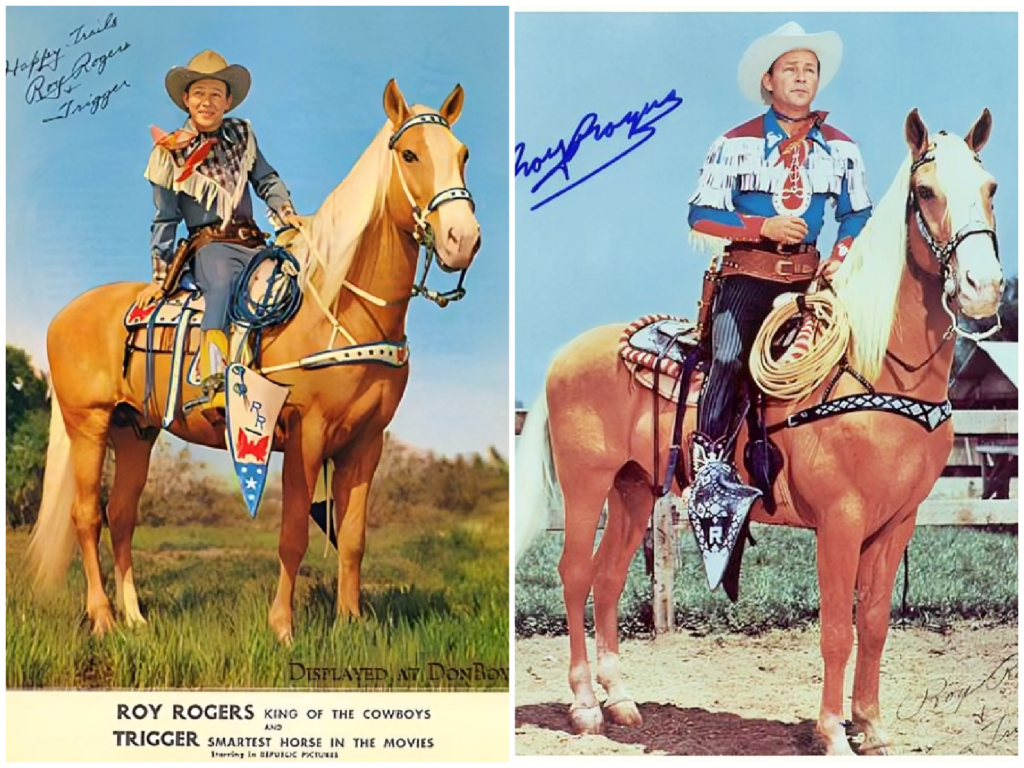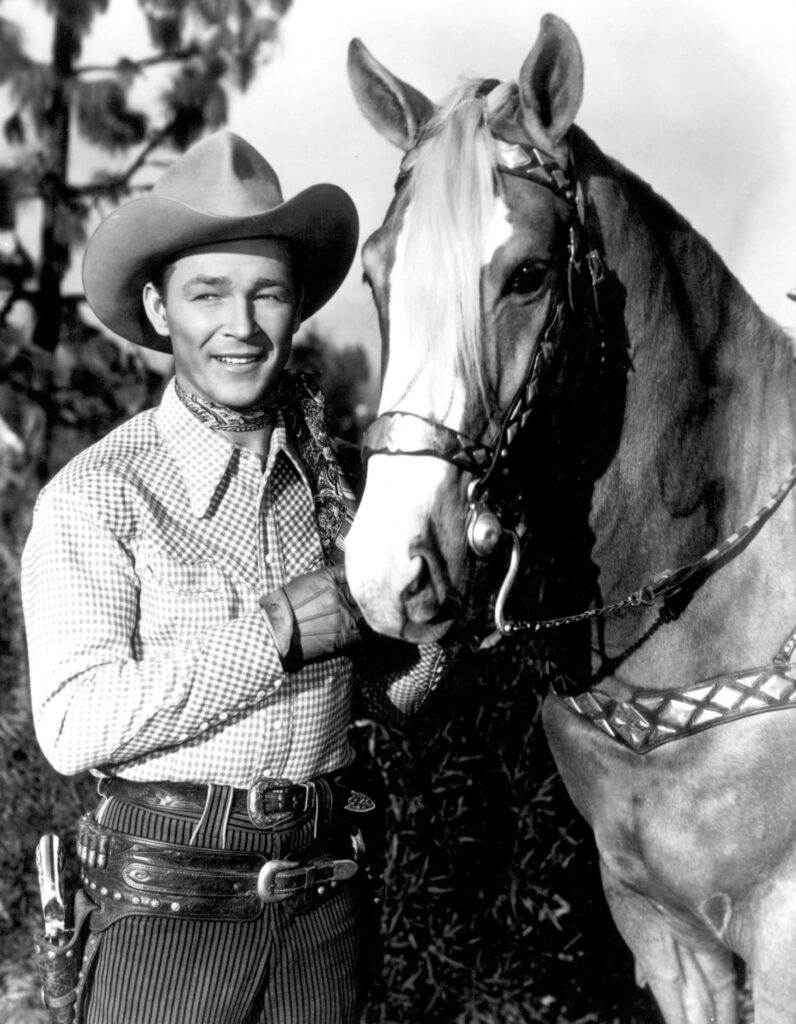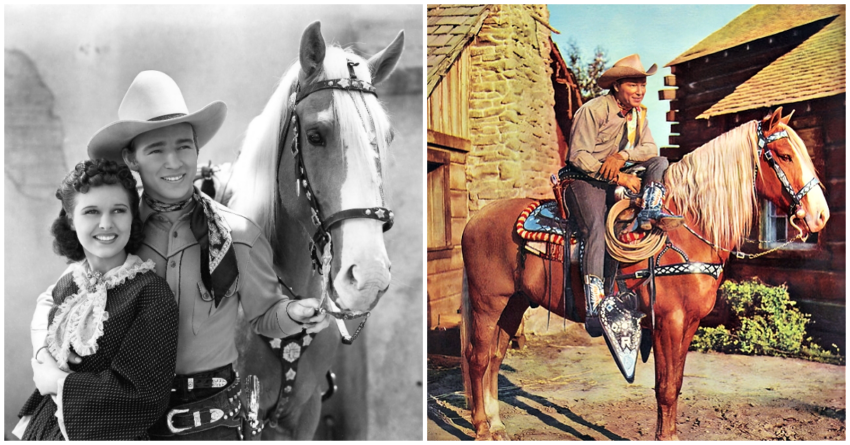In the world of classic Westerns and old Hollywood, few animal stars can match the fame and charm of Trigger, the iconic horse of Roy Rogers. Trigger’s story began not as a Hollywood sensation but as Golden Cloud, a spirited palomino horse who first appeared in The Adventures of Robin Hood (1938) as Maid Marian’s steed, played by Olivia de Havilland. His golden coat and natural grace caught the eye of many, but his true rise to fame came when Roy Rogers, the “King of the Cowboys,” stepped into the picture.

The Perfect Partner: How Trigger Found Roy Rogers
When Rogers was preparing to star in his first film, he was offered a choice of five rented “movie” horses. Among them, Golden Cloud stood out, and Rogers knew immediately that this horse would be his partner. The pair developed an unshakable bond, and in 1943, Rogers officially bought the horse and gave him the name “Trigger,” reflecting his quickness of both foot and mind.

Trigger was no ordinary horse; he was a well-trained companion who could perform over 150 trick cues, a feat that few horses have ever achieved. From walking 50 feet on his hind legs to bowing in response to applause, Trigger was a true performer. According to sources close to Rogers, the pair eventually ran out of tricks to teach Trigger—he had learned them all!
One of Trigger’s quirkiest habits was that he loved the limelight. Whenever he heard applause, he couldn’t resist bowing, often repeating the trick even when it wasn’t part of the routine. He could also sit in a chair, sign his name with an “X” using a pencil, and even cover himself with a blanket for a nap. His repertoire of tricks made him a beloved figure on screen and off.
Trigger’s Star Power and Personal Appearances
Trigger wasn’t just a sidekick; he was a full-fledged star. Rogers understood the special bond he shared with his horse, so much so that he even signed a “Best Wishes for the New Year” advertisement in Variety with “Roy Rogers and Trigger.” Together, they appeared in numerous films and became household names, captivating a youthful audience with their Western adventures.

In addition to movies, Trigger appeared in Roy Rogers’ 1950s television series alongside Rogers’ wife, Dale Evans, and her trusted horse, Buttermilk. The fame of Trigger extended far beyond the screen—he was featured in his own Dell comic book series, chronicling his adventures and solidifying his place as the most famous horse in film history.
Rogers made countless personal appearances with Trigger, often visiting hospitals where they would meet sick children. In his autobiography Happy Trails, Rogers recounted leading Trigger up three or four flights of stairs to bring joy to children confined to hospital beds. Trigger’s gentle nature and well-trained manners made him a comforting presence during these visits.
Trigger’s Greatest Accomplishment: A Well-Mannered Star
Perhaps one of the most impressive and little-known feats of Trigger was his housebreaking. Spending long hours in hotels, theaters, and hospitals with Rogers, Trigger needed to be as well-mannered as any human co-star. According to Glenn Randall, a wrangler at Hudkins Stables, many trainers considered Trigger’s ability to be housebroken as his greatest accomplishment. It was yet another testament to the extraordinary connection between Roy Rogers and Trigger, a bond built on trust, patience, and mutual respect.

A Legacy That Lives On
Trigger was more than just a movie horse; he was a symbol of the Golden Age of Hollywood Westerns and the enduring partnership between a cowboy and his horse. Long after his passing, Trigger remains an icon in popular culture, remembered not only for his dazzling tricks but also for the joy he brought to millions of fans around the world.

As the most famous horse in entertainment history, Trigger’s legacy is immortal. He rode alongside Roy Rogers through countless adventures, both onscreen and off, and together, they created a lasting impression on the world of Westerns that continues to be celebrated to this day.
